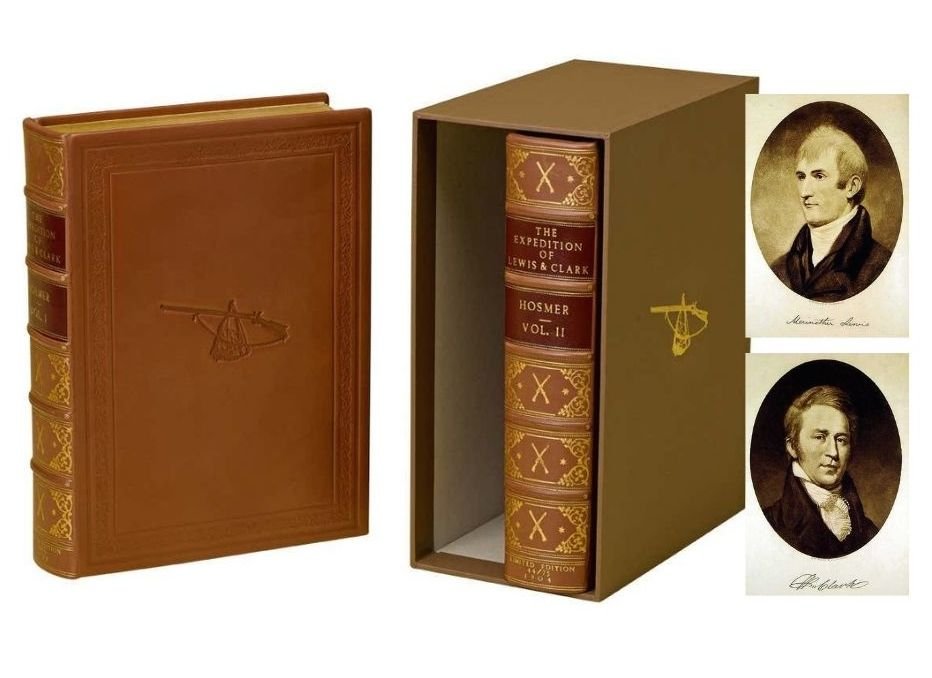The Oregon Trail and Westward Expansion
The Oregon Trail is at the center of many stories involving war, treaties, exploration, the search for wealth, and the opportunity to begin a life anew. From its humble beginnings, the Oregon Trail grew to be the connection between the United States and the much-desired Pacific Coast.
What was the Oregon Trail?
The Oregon Trail was an emigrant route that stretched more than 2,000 miles, bringing travelers from east to west across the country. The famous trail had several potential starting points including the Nebraska Territory, Iowa, and Missouri. Independence, Missouri was the most notable, however, and the trail ended in Oregon City, Oregon. Americans dreamed of a land bursting with rich soil, resources, and gold in a time of economic hardship and war. However, nothing good comes without some difficulty. The journey proved arduous and treacherous with an estimated one in every 17 travelers dying en route.
 While many Native American groups had lived in the area for centuries, Lewis and Clark were the first recorded Americans to explore the area in 1804-1806. A fascination followed the publication of their book in 1814 and traders soon ventured all the way to Oregon Country. Traders and trappers traversed the general route that would become the Oregon Trail throughout the early 19th century, as it was navigable by foot and on horseback but not wagon-friendly yet. Only in 1836 was the Oregon Trail formally blazed when a group of missionaries hoping to spread Christianity put together a cohort of wagons and migrated together. Over the next two decades, the travel conditions vastly improved. Eventually roads were fixed, ferries were available, bridges were built, etc., making westward travel a little less hazardous.
While many Native American groups had lived in the area for centuries, Lewis and Clark were the first recorded Americans to explore the area in 1804-1806. A fascination followed the publication of their book in 1814 and traders soon ventured all the way to Oregon Country. Traders and trappers traversed the general route that would become the Oregon Trail throughout the early 19th century, as it was navigable by foot and on horseback but not wagon-friendly yet. Only in 1836 was the Oregon Trail formally blazed when a group of missionaries hoping to spread Christianity put together a cohort of wagons and migrated together. Over the next two decades, the travel conditions vastly improved. Eventually roads were fixed, ferries were available, bridges were built, etc., making westward travel a little less hazardous.
History of Oregon Country
Unfortunately, America was not the only country to lay claim to the area. Both the U.S. and Great Britain asserted their ownership based on explorers. Great Britain declared its portion of the territory based on Captain James Cook’s exploration of the Columbia River (1787-1790). The United States, on the other hand, based its portion of the territory on the explorations of Lewis and Clark (1804-1806) and the establishment of John Jacob Astor’s Pacific Fur Trading Company’s trading posts in the area. A previous arrangement for other territory set the northern American-British Columbia border along the 49th parallel. The U.S. moved to extend that same border west to the Pacific while Great Britain opted to extend it only to the Columbia River and then follow the river to the coast. Neither side could agree and they tabled the conversation, agreeing to ‘share’ the land in the meantime. Even on maps, the disputed area was highlighted to show that the issue was not resolved and could change someday.
During that time of tabled discussion, a great influx of American settlers began migrating to Oregon Country. Once the Oregon Trail provided a clear, albeit difficult, path to the resource-rich area, then many young men and even families traversed the West in search of a better life and an escape from economic hardship. President Polk was a major believer in Manifest Destiny and in 1846 pushed to resolve the issue. Great Britain agreed to the 49th parallel border with only a few adjustments allowing Vancouver Island to remain Canadian. The agreement finally paved the way for Oregon to become a formal U.S. Territory and in 1848, it did just that.
Oregon Gold Rush and Statehood
 By 1848 a steady stream of settlers had been braving the vast, unsettled area between the formal states and Oregon City to take advantage of the bountiful resources there. However, that steady stream better resembled a burst dam once gold was found in Josephine Creek and in the creeks near Jacksonville, Oregon in 1850 and 1851. Immediately following the famed California Gold Rush, Oregon Territory experienced her own flock of miners and within the decade, the area was populous enough to apply for statehood. In 1859, Oregon became the 33rd state in the Union.
By 1848 a steady stream of settlers had been braving the vast, unsettled area between the formal states and Oregon City to take advantage of the bountiful resources there. However, that steady stream better resembled a burst dam once gold was found in Josephine Creek and in the creeks near Jacksonville, Oregon in 1850 and 1851. Immediately following the famed California Gold Rush, Oregon Territory experienced her own flock of miners and within the decade, the area was populous enough to apply for statehood. In 1859, Oregon became the 33rd state in the Union.
This sudden explosion in population may have resulted in statehood, but the gold soon ran out. By the 1860s, some left the state in search of a new get-rich-quick strategy, but many others stayed and made a living through furs, fishing, timber, and a number of other marketable resources. Throughout the early 19th century, the Oregon Trail served as the best known route to the wild west and witnessed more than one territorial exchange, an influx of travelers, a gold rush, and finally its own extinction as the Transcontinental Railroad rendered it obsolete in 1869.










